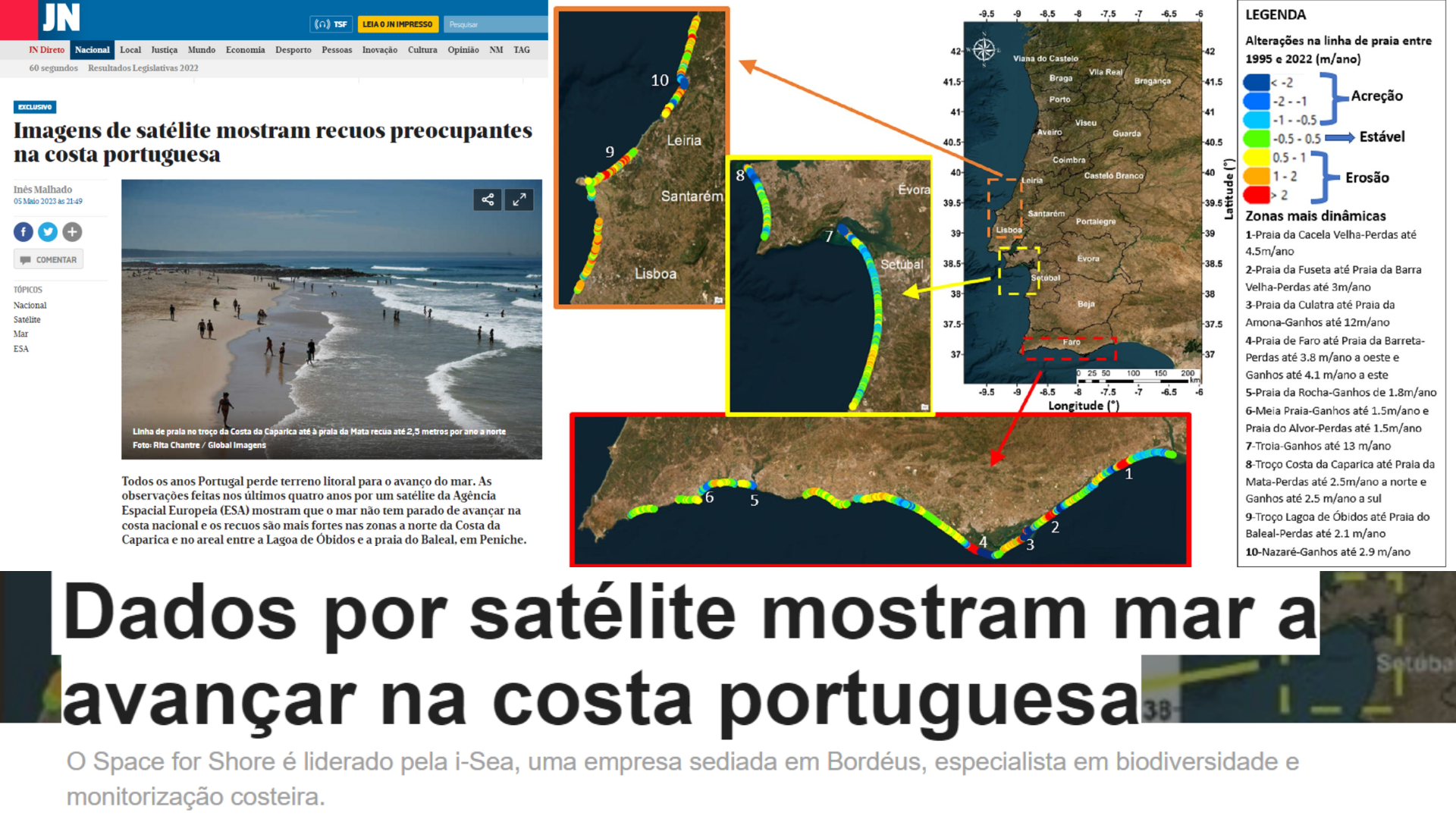The study by our researcher Paulo Baganha (CESAM/DGEO), part of a consortium led by the European Space Agency (ESA), has been featured in national media. This program, launched by ESA to monitor European coastal erosion from space, is coordinated in Portugal by the University of Aveiro (UA).
As Paulo Baganha stated in a press release, “trends of shoreline retreat are evident in many European coastal areas.” In Portugal, for example, the sandy stretch between Óbidos Lagoon and Baleal Beach is retreating at a rate of about 2.1 meters per year. Along the Costa da Caparica, the beach shoreline is receding by around 2.5 meters per year. The rates of coastline retreat between Troia and Sines and various points along the Algarve coast are also concerning. These are some of the national coastal erosion points detected by the “Space for Shore” program.
For four years, over 70 scientific and coastal management organizations from the six member countries of the program (France, Germany, Portugal, Greece, Romania, and Norway) shared their concerns and expressed the need for regular data and information to characterize coastal dynamics, assess the evolution of erosion risk, and the vulnerability of coastal areas to climate change. This work covered 4,500 kilometers of coastline in these six countries, from the Mediterranean and Black Sea coasts, through the Atlantic-Channel-Manche-North Sea coasts, to the Arctic (Svalbard Archipelago).
For each of the European countries participating in this study, Paula Baganha points out, “several indicators of coastal erosion were produced, including the maximum wash-up line, the baseline of the dune, the position of the base and crest of rocky cliffs.” Climate change, increased severity and persistence of storms, and the general trend of rising sea levels seem to anticipate concerning scenarios of coastal erosion if concerted mitigation policies are not adopted.
However, “despite the erosive trend in most of the Portuguese coast, it is observed that, in certain locations, measures taken by coastal managers show positive results, such as in Nazaré or the beaches south of Costa da Caparica,” points out Paulo Baganha Baptista.
The end of funding for this project by the European Space Agency does not mean that indicators of coastal erosion will cease to be generated. Paula Baganha reminds us that “the provision of dedicated services for the entire national territory, in nearly real-time, of the various coastal erosion indicators considered in this project, for which specific algorithms have been developed for automatic calculation, is being studied for the community of users interested in coastal management.”
Text by: CESAM based on content from the University of Aveiro
